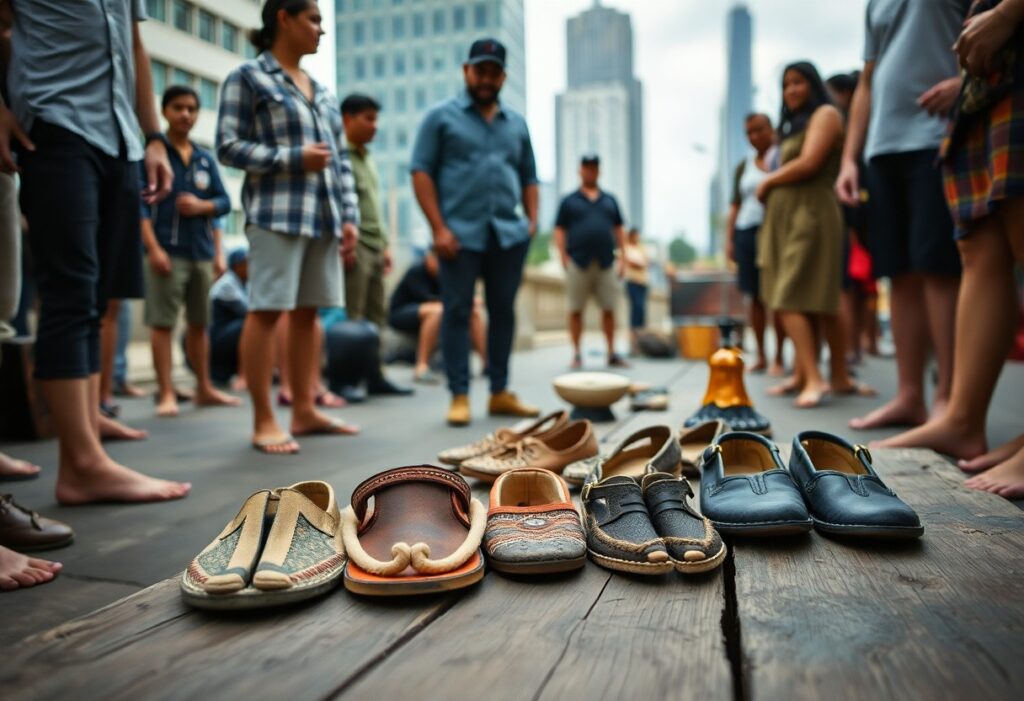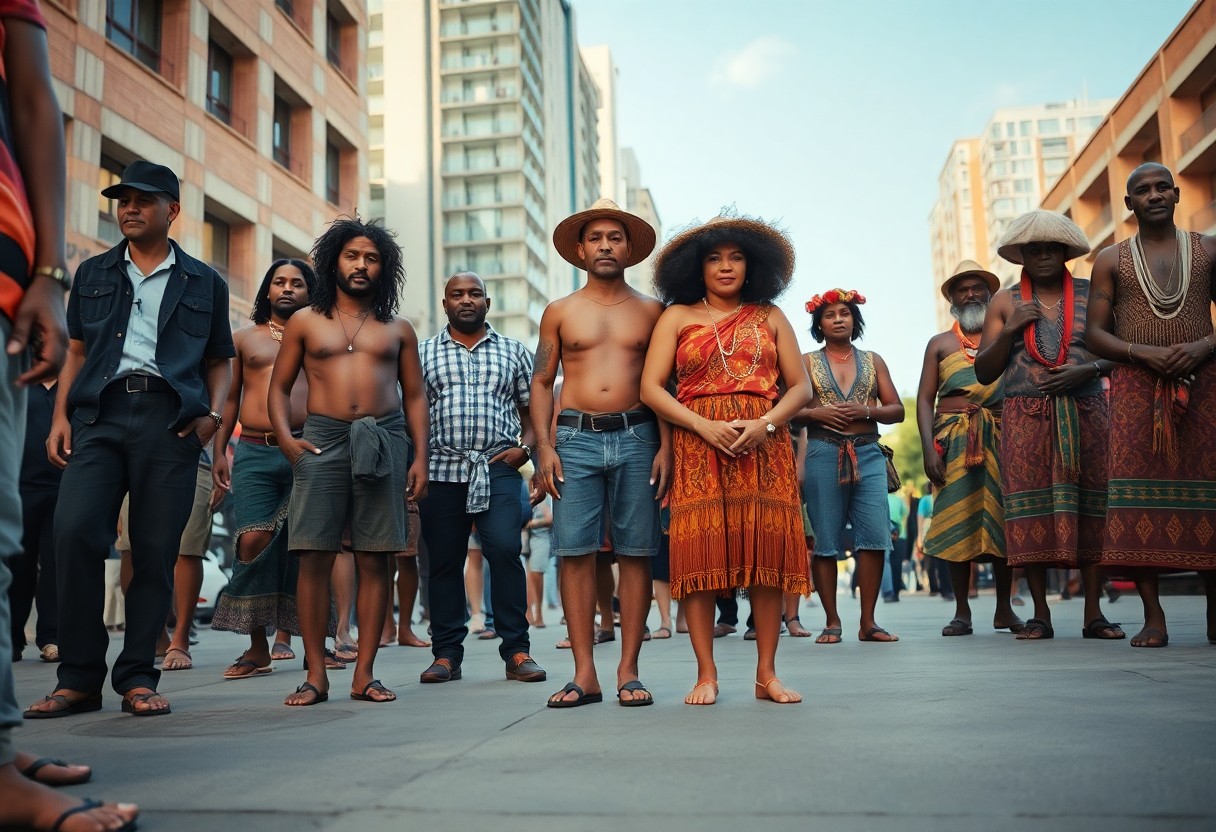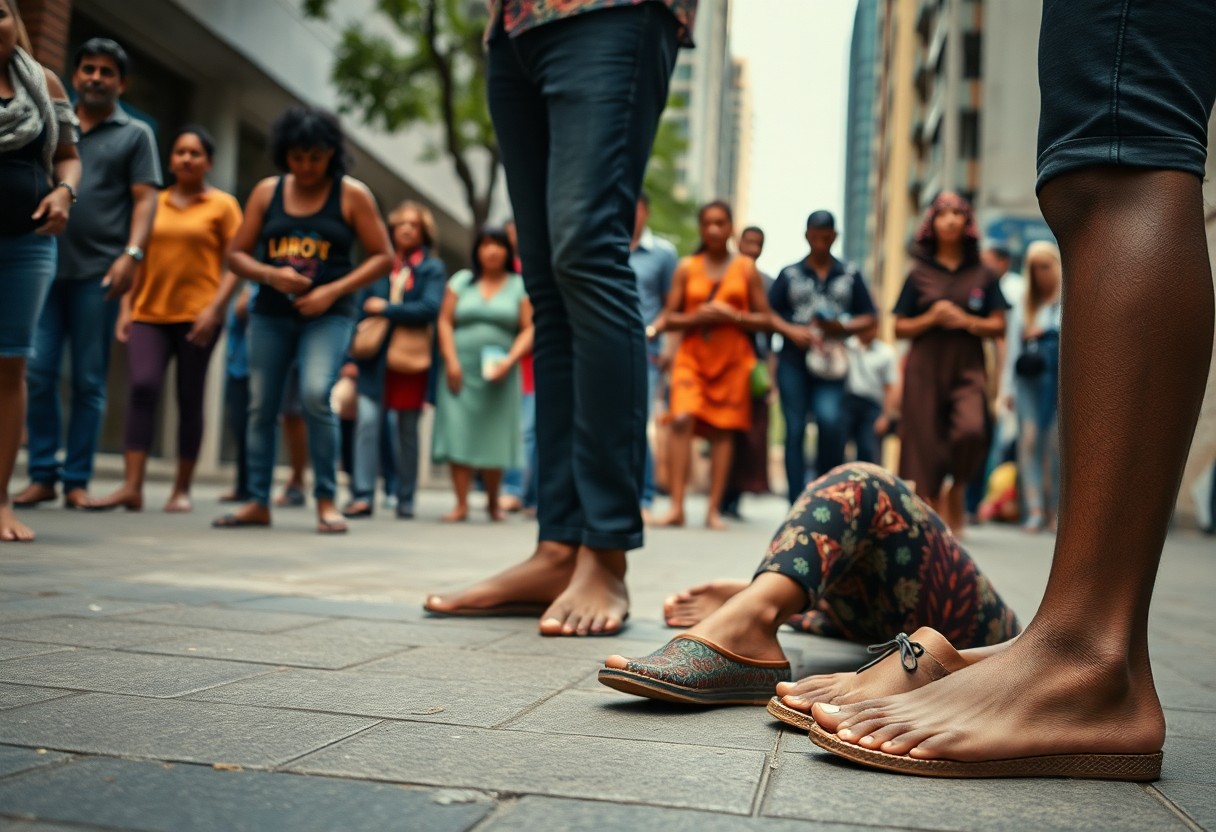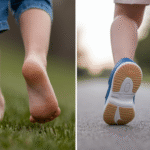
Exploring the captivating world of barefoot footwear from a cultural anthropology standpoint unveils intriguing narratives that blend the deep-rooted traditions of Aboriginal cultures with contemporary urban life. As you journey through this enlightening transformation, you will uncover how the cultural beliefs and practices surrounding minimalist footwear shape our understanding of comfort, influence our connection to the earth, and serve as a medium for expressing our unique identities. Gaining insights into these themes not only expands your awareness but also prompts a thoughtful reassessment of how your footwear selections can embody profound cultural significance and reflect personal identity.

Discovering the Connection Between Historical Footwear Traditions and Modern Innovations
The contemporary footwear industry showcases a vibrant mosaic that intricately fuses ancient customs with cutting-edge innovations, fostering a heightened appreciation for barefoot footwear. This exploration not only pays homage to traditional indigenous techniques but also adapts these time-honored practices to resonate with your modern lifestyle. By acknowledging the importance of historical methods, you can delve into an exciting blend of cultural reverence and practical aesthetics in your everyday footwear choices, enriching your personal style while honoring the legacy of the past.
Comparing Indigenous Foot Conditioning Techniques with Modern Footwear Practices
Globally, indigenous cultures have developed specific conditioning methods designed to strengthen their feet for various terrains. Techniques such as walking barefoot on diverse surfaces have effectively enhanced foot arches and muscles in ways that many contemporary designs struggle to replicate. While there are minimalist footwear options crafted to mimic these benefits, they often fall short of providing the authentic experience of direct earth contact, which is essential for developing natural foot strength and flexibility. By understanding the differences between these practices, you can appreciate the value of traditional methods while making informed choices about your modern footwear.
The Historical Progression of Military Footwear: Transitioning from Caligae to Modern Tactical Boots
The story of military footwear is a fascinating chronicle of adaptation and advancement, evolving from the robust Roman caligae, engineered for strength and traction, to the contemporary tactical boots that combine protection, agility, and comfort. An investigation into these transitions reveals a consistent guiding principle: in demanding environments, functionality reigns supreme, necessitating gear that enhances soldiers’ endurance and mobility. This enduring focus on practicality has shaped the evolution of military footwear over centuries, reflecting the changing needs of warriors throughout history.
The Roman caligae exemplified a sophisticated response to military demands, crafted from durable leather with an open-toe design that ensured ventilation. This ancient footwear was equipped with thick soles that effectively absorbed shock and provided crucial traction, essential in combat scenarios. Fast forward to the present, and tactical boots are constructed from advanced materials like Kevlar and waterproof membranes, significantly enhancing durability and performance. These modern designs feature padded collars and state-of-the-art cushioning systems aimed at minimizing injuries during rigorous military operations. By recognizing the heritage of military footwear, you cultivate an appreciation for how historical styles have laid the groundwork for contemporary innovations, merging heritage, practicality, and cutting-edge technology to fulfill the demands of today’s warriors.

Analyzing Footwear Preferences in Urban Versus Rural Settings
The contrasting footwear preferences observed between urban and rural settings highlight significant cultural and practical differences. Urban environments often prioritize aesthetics and brand identity, whereas rural areas tend to emphasize functionality and durability. As barefoot footwear gains popularity, city dwellers increasingly embrace its minimalist design as both a fashion statement and a way to achieve perceived health benefits. On the other hand, individuals in rural regions may remain skeptical, influenced by traditional norms and the practical necessities dictated by their environments.
Spotlighting the Growing Trends in Urban Adoption of Barefoot Footwear
In urban centers, a discernible shift towards adopting barefoot footwear is taking place, with increasing rates of acceptance over the last decade. This trend is driven by various factors, including heightened health consciousness, an expanding interest in natural movement, and the impact of popular fitness trends such as yoga and running. Recent surveys reveal that approximately 35% of urban dwellers actively seek out barefoot-style shoes, indicating a cultural shift towards embracing innovative body mechanics and a more health-oriented lifestyle.
Exploring Gender Dynamics in the Adoption of Barefoot Footwear: Who is Leading the Charge?
Gender dynamics significantly influence the acceptance of barefoot footwear, with differing motivations shaping men’s and women’s preferences. Women often encounter heightened societal expectations regarding fashion and aesthetics, which may deter their willingness to embrace minimalist styles. Conversely, men may be more driven by the performance and health benefits associated with these shoes, resulting in higher adoption rates among male consumers. This gender disparity highlights the need for targeted strategies to promote barefoot footwear among women, who may benefit from its advantages.
A closer look at the gendered aspects of barefoot footwear adoption reveals that societal expectations profoundly influence women’s choices. Women frequently navigate an environment where ideals of beauty and fashion overshadow practical health benefits. Research indicates that approximately 45% of men in urban areas gravitate towards barefoot shoes, compared to only 30% of women. Female consumers often struggle to balance aesthetics with practicality, leading to more cautious evaluations of barefoot footwear’s design concerning their requirements for comfort and support. By empowering women through focused awareness campaigns and showcasing stylish barefoot options, the willingness to adopt this trend could be fostered, potentially transforming urban footwear narratives and promoting inclusivity across gender lines.

Innovative Technologies Shaping the Future of Barefoot Footwear
As the appetite for barefoot footwear continues to surge, groundbreaking technologies are poised to redefine your approach to comfort and performance. Innovations in materials science and personalized fitting techniques will not only enhance functionality but also tailor your walking experience to your unique needs, blending traditional wisdom with modern design principles. You are embarking on a journey where your footwear becomes as distinctive as the path it supports, leading to improved comfort and performance tailored specifically for you.
Harnessing 3D Scanning Technology for a Custom Fit
The emergence of 3D scanning technology is revolutionizing the customization of barefoot footwear, enabling a precise fit that conforms to your individual foot shape. Rather than settling for standard sizes, your shoes can be expertly designed to match the contours of your feet, significantly enhancing comfort and lowering the risk of injury. Custom-fit options not only elevate your walking experience but also ensure that barefoot shoes are accessible to individuals with diverse foot shapes and sizes, promoting inclusivity in footwear design.
Incorporating Smart Sensors: The Next Frontier in Footwear Technology
The integration of smart sensors into barefoot footwear is set to transform the industry by embedding advanced technology directly within the soles. These innovative features have the potential to monitor a range of metrics, including distance traveled and foot pressure, providing you with invaluable insights to refine your walking or running habits. With real-time data at your disposal, you can adjust your activities to enhance performance while safeguarding your health.
Imagine having access to real-time analytics as you walk or run. Smart sensors can track your gait, alerting you to any irregularities that might lead to injury. Some pioneering brands are already developing footwear capable of analyzing your foot’s impact on various terrains, offering personalized recommendations for style or cushioning adjustments on the fly. This advanced integration merges smart technology with the traditional barefoot philosophy, ensuring that you maintain a natural stride while embracing the latest advancements in wearable tech. The potential for enhancing sports performance, rehabilitation, and everyday comfort is limitless, fundamentally transforming your interaction with your environment with every step.
Reflecting on the Journey of Barefoot Footwear Evolution
Your exploration of the cultural anthropology of barefoot footwear reveals a rich narrative woven from the threads of Aboriginal traditions to contemporary urban practices. By embracing the principles of natural movement and a profound connection to the earth, you gain insights into how this footwear philosophy transcends mere fashion, significantly influencing lifestyle choices and community values. As you contemplate these diverse perspectives, consider how your footwear selections can embody and promote a deeper understanding of cultural heritage and adaptability in today’s ever-evolving world.
The Article Cultural Anthropology of Barefoot Footwear: From Aboriginal Traditions to Modern Urban Adoption appeared first on My Shoes Finder
The Article Cultural Anthropology of Barefoot Footwear: Traditions to Today Was Found On https://limitsofstrategy.com
The Article Cultural Anthropology of Barefoot Footwear: From Traditions to Now First Appeared ON
: https://ad4sc.com






Comments are closed